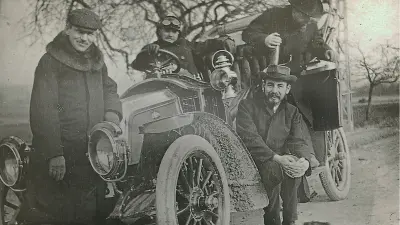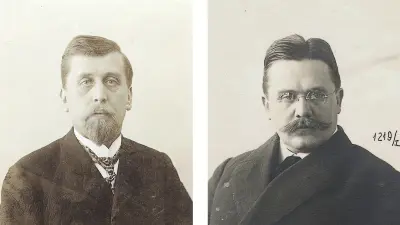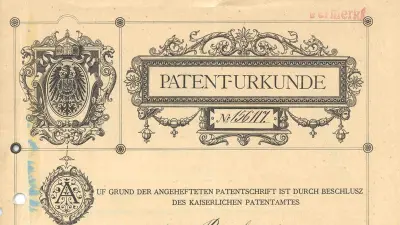On a January day in 1902 — a very special patent request of Robert Bosch

In automobile manufacturing, which was still in its infancy around the year 1900, ignition was proving to be carmakers’ “trickiest problem,” as car inventor Karl Benz observed.
With Gottlieb Daimler’s glow-tube ignition there was a constant hazard of fire, and battery-powered ignition systems restricted the range of cars to a few dozen kilometers, since there were as yet no on-board systems like today’s alternators to recharge batteries while driving.
Problem solved?

In 1897, this problem seemed to be solved: Arnold Zähringer, Bosch’s factory manager, came up with the solution. Instead of moving the ponderous armature itself through the magnetic field, he left that job to a metal sleeve which he laid around the armature. Zähringer's invention was patented for Bosch in June 1897 and the first magneto was mounted on a vehicle engine in autumn.
The innovative ignition device had in theory solved the ignition problem for high-speed internal-combustion engines in vehicles. However, the weakness of its design was still the complicated break-spark rodding needed to create the ignition spark in the combustion chamber. This rodding had to be redesigned for every engine. It was also needy of maintenance and prone to breakdown.
High voltage
In the summer of 1901, therefore, Robert Bosch gave Gottlob Honold, his head of development, the brief to design a magneto ignition system without break-spark rodding. After just a few months, Honold presented his high-voltage magneto ignition system, based on what was known as electric arc ignition. By means of two coils on the armature, it generated a high-voltage current. This current was conducted to a spark plug via a cable connection. The high-voltage current jumped the gap between its electrodes in the form of a spark.
The design of a spark plug with two discrete electrodes had been known since about 1860, and had been tried out in ignition experiments with gasoline engines by Karl Benz, among others, but with little success. In most experiments, the material used for the insulation and the electrodes proved unsuitable. Honold developed a highly insulating ceramic for the insulating body and a heat-resisting alloy for the electrodes. This brought magneto ignition up to a technological standard that guaranteed it, for the time being, great success. On January 7, Bosch hit the target – a patent application for the innovation.

Excellent market position
Even before the First World War, magneto ignition had become well established in automobiles, so it was able to command a strong market position. Having manufactured less than 50 000 low-voltage magnetos between 1897 and 1902, production increased rapidly — reaching the number one million in 1912.
The singular success of the spark plug
The spark plug itself was in fact only a by-product that Bosch had to manufacture in order to be able to offer a complete system. In the meantime it has turned the tables on magneto ignition. It is interesting to note that while magneto ignition has long since disappeared, Bosch today manufactures more than 300 million spark plugs per year.
Author: Dietrich Kuhlgatz
